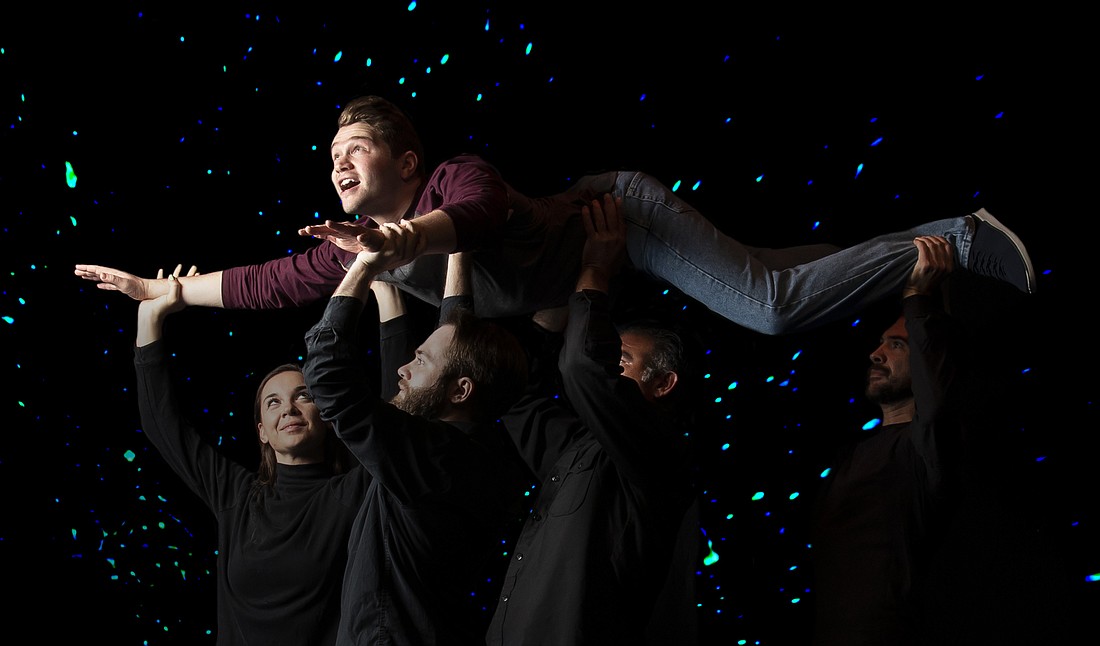- December 21, 2025
-
-
Loading

Loading

If you think a stage set is unimportant stuff that stays in the background, you’re not paying attention.
Set design frames your experience of any play. It’s a way of illustrating the world of the playwright’s imagination.
You name it, Moriah and Isabel Curley-Clay have probably made it real. This dynamic duo of twin sister designers has created everything from dive bars to dungeons. But the world of “The Curious Incident of the Dog in the Night-Time” at Florida Studio Theatre is something else entirely. The world of the play exists in the protagonist’s head.
Christopher has an exceptional mind. He’s blamed for an exceptionally odious crime — the murder of a neighbor’s poodle with a pitchfork. Following in the footsteps of his hero Sherlock Holmes, he attempts to clear his name in an odyssey across contemporary London. The game’s afoot, and it’s a game of logic, deduction and memory. How do you put that on stage and make it interesting?
You can’t do it with furniture, that’s for sure. Christopher inhabits a subjective world; mere objects fall short of bringing it to life. The Curley-Clays knew there was only one solution — light itself. The entire set would need to function as a blank screen for a flood of images of the hero’s inner life. That meant a close collaboration with Bobby Johnston, the lighting and projection designer.
After director Richard Hopkins gave them the assignment, they knew exactly how to proceed. Like Holmes himself, the Curley-Clays began at the logical starting point — character. The play unfolds Christopher’s inner life. Getting to know him would be the first task. The most logical shortcut?
Read the book, Mark Haddon’s source novel, which Simon Stephens adapted for this play.
“The original novel gave us many specific insights into how Christopher thinks and navigates in the world,” says Isabel. “He’s very precise — and feels connected to the larger universe, but disconnected from other people.”
“Christopher also thinks in terms of maps, grids, lists and equations,” adds Moriah. “He has a Cartesian, analytical mentality.”
The Curley-Clays refined their impressions in their initial phone conversations with Hopkins. They’d find some physical equivalent for his Cartesian grids. Projected images of stars and constellations could unfold his connection to the universe. Maps could reveal how he navigates through life.
“We really had two choices,” says Isabel. “The set could be almost nothing, or packed with everything you can think of.”
“In the end, we decided on a minimal approach,” says Moriah. “That really offers more flexibility. A set that’s almost nothing could become anything.”
They started with countless possibilities and gradually narrowed it down. The Curley-Clays dug into their research. Ideas and images flew back and forth. They threw a lot of promising concepts away. And in the end, a set design finally crystallized.
It’s a void. The stark interior of an empty structure. Blank walls, emblazoned with a grid pattern. Four openings. No furniture, but cubes on the floor to sit on.
“It’s a blank slate,” says Isabel.
Johnston would write on that slate with light.
“The entire stage space functions as a screen,” he says. “I can project on any part of the set with multiple and overlapping images. For this show, I’ll be using a total of five projectors.”
Johnston will be using QLab software, working out the sequence of imagery beforehand.
“You’ll see all the frightening and beautiful images popping into Christopher’s mind,” Johnston says. “Equations … memories of his mother … a map of the city of London. You can really see his thought processes as he puts two and two together.”
The associative imagery of the new BBC “Sherlock” series is the closest comparison. “Not to boast,” he says, “but I can duplicate any technique you see on film or television.”
The special effects are special. But effects are never the point.
“We’re creating a psychological space,” says Isabel. “That’s true for most of our scenic designs. Although this space is literally inside Christopher’s mind, it’s really the same approach.”
“We’re serving the story,” says Moriah. “That’s always our purpose. The audience will be sharing a journey with Christopher. We hope your sense of a physical set will disappear as you follow his steps and get lost in his world.”